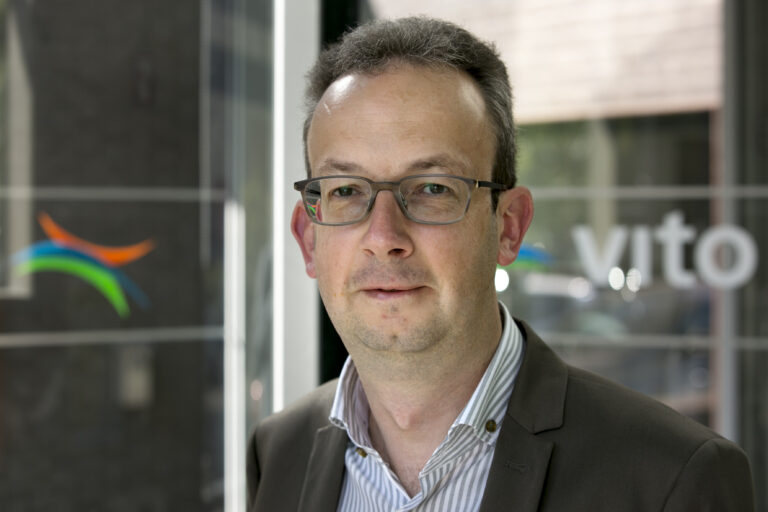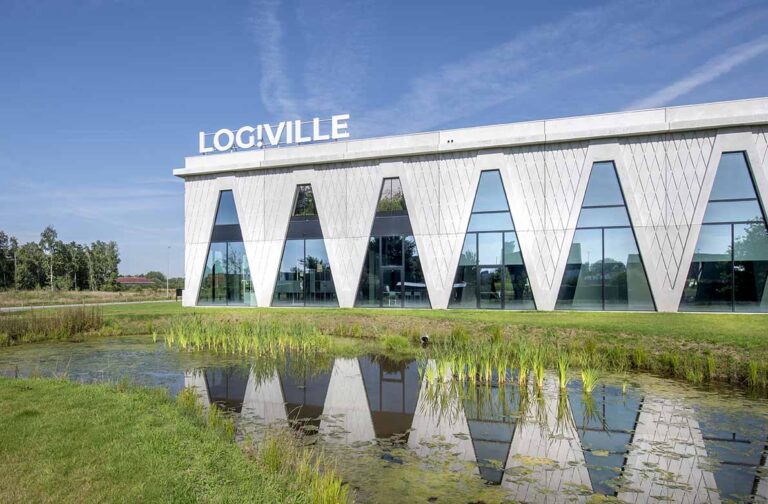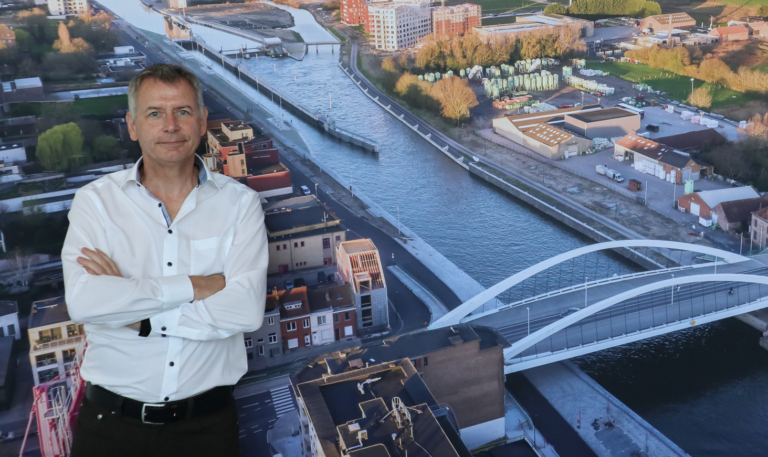Eric Pierrel (Eyesee): “Market potential for inventory drones remains massive”

A striking demo at Log!Ville is the one featuring an inventory drone from Start2Scale-up partner Eyesee. The drone autonomously flies past racks while reading barcodes to count pallets and then transmitting the data to a WMS. The solution was developed by a startup based in Grenoble, France. Eric Pierrel, co-founder of Eyesee, presents the company to us.
How was Eyesee born?
Eyesee is a solution for taking inventories in warehouses with a drone. It was born from the collaboration between two Grenoble-based companies: Hardis Group, a consultancy, digital services provider and software developer specialising in commerce and supply chain; and Squadrone Systems, a developer and manufacturer of professional drones.
Stéphane Cadenet, WMS Project Director at Hardis, is an aeromodelling fanatic in his spare time, and he came up with the concept. He searched for a partner to build a prototype with and found it in Squadrone, also based in Grenoble. Together, between 2015 and 2020, they worked on developing prototypes and testing them in real working conditions at various logistics sites in France, including at L’Oréal, Volvo Trucks, DHL, FM Logistic and IKEA.
In 2021, when the concept was production-ripe, certified and ready for commercialisation, a ‘dedicated’ company was launched by four co-founders: Darwin Drones. Commercially, though, we continue to market the drones under the Eyesee brand.
What is an inventory drone used for?
Regularly, inventories in a warehouse need to be counted and recorded. Conventionally, this is done by employees physically using handheld scanners – or at worst a paper list – to identify products and record quantities. This is time-consuming and error-prone, and not always safe because one of the employees has to work from a gondola or cage on a forklift or reach truck.
Drones work more accurately and much faster than people. They can monitor hard-to-reach locations – pallet racks up to 20 metres high in our case – safely. Operations within the warehouse need only be interrupted minimally and labour costs are very low. Therefore, the frequency of inventories can be increased if desired.
What is specific about the Eyesee solution?
It consists of three components: the Eyesee Drone, an autonomous drone equipped with three cameras to read barcodes; the Eyesee App on a tablet to track activity, receive video in real-time and activate safety mechanisms if needed; and Eyesee Cloud, a software to manage mapping, data processing, reporting, transferring data to the WMS, etc.
Also specific to our solution is that it does not require any fixed infrastructure. Some customers therefore use the same drone in different warehouses. Eyesee is already deployed in around 30 warehouses.
Thanks to that flexibility and ease of deployment, we can propose two business models: a first one for ‘rotating inventory’ (ed: cyclical counting of stock’, where it is counted regularly and in smaller parts throughout the year, rather than doing a full inventory once a year) where the company buys or leases the drone and operates it itself, at a frequency they determine. A second one is where we conduct the inventory ourselves – or with a partner – for the client. This is mainly for the annual (or quarterly) fiscal inventory for customers who don’t need a drone full time.
What differentiates Eyesee from other inventory drones?
A first advantage is the ease of deployment of the solution. As I said, we don’t need fixed infrastructure, nor a complete mapping of the entire warehouse. Localisation is done aisle by aisle. At its beginning and end, we place a mobile UWB beacon that allows the drone to know its position.
A second feature is that we fly and operate autonomously, but under the guidance of an operator. In our view, a human’s input means added value. He places the beacons, changes the battery, can make an emergency stop if necessary, and detects anomalies more efficiently than AI would. For example, he can pause a flight to take a video of a badly placed pallet or a missing bolt on a rack. Or note an observation with the tablet. All this makes our setup much less complex than with fully autonomous drones… and, by the way, we are often told that we are much cheaper than the competition.
Returning to the battery change. With fully autonomous drones, autonomy is a hurdle and the operation is quite complex, in the sense that the drone has to fly back to a charging station by itself. Battery autonomy at Eyesee is around 15 to 20 minutes. The operator switches batteries in a matter of seconds. The loss of time is thus minimal. Seven batteries come standard with an Eyesee drone. Practice shows that this is more than sufficient. If certain tasks require more of them, there is no problem to add in extra ones. We even have customers who do full wall-to-wall inventories, flying 24 hours in a row.
What challenges do you see for Eyesee into the future?
The biggest challenge is scale. Today, we operate at about 30 logistics sites in Europe, mainly in France. This is quite a lot, but proportionally peanuts. Globally, there are 150,000 warehouses of more than 5,000 m². That is the absolute minimum for drone deployment. Below that, it does not pay off. We can observe that automated inventory solutions – ours but also others, with or without drones – have barely taken hold: less than 0.01% of the potential is covered. So the market is not the problem, but upscaling is.
A second challenge I see is the deployment of inventory drones in cold stores. The technology works in very cold environments, as trials have shown. However, acquiring a certification of the solution will be difficult. If we succeed, we will broaden the scope of implementation significantly, because the need for automated inventories is even greater there than in ambient warehouses.
Why did Eyesee become a partner of Log!Ville?
As I mentioned, automated inventory solutions are still very rarely used today. There are many reasons for this, but an important one is that there is some scepticism around drones’ efficiency and complexity. In Log!Ville, we can show visitors that our solution works and that installation is simple. Showing is important: seeing is believing.
The quality of the visitors also plays a role. After about six months, we see that they are qualified people looking for information and inspiration.
Visibility, by the way, is very important to us. Eyesee is a small Grenoble-based company: we’re only about 15 people. It is therefore difficult for us to invest in a large-scale commercial network. Log!Ville allows us to get more visibility in the Benelux area, thus offering opportunities to spread our wings faster.
As for Log!Ville itself, I must say that it is a unique model because it is an ‘open’ centre. There are other innovation and demonstration centres in Europe where different solutions are shown – including ours – but they are all owned and run by logistics groups. Thus, the information is in service of those 3PLs and is considered a commercial argument towards their own customers or potential customers. Here in Niel, the information is at the service of the logistics community as a whole.



